GUEST DIGEST: Seamus Sullivan

Welcome to the Stone Soup Digest! This is where I share what I'm up to and some of my favorite things from around the internet. Subscribe to Stone Soup to get this in your inbox every week.
This week's Stone Soup Digest will be hosted by Seamus Sullivan! His fiction has appeared in Terraform, and his book reviews have appeared in Strange Horizons. He lives in Jersey City with his family. Daedalus is Dead is his first book.
Take it away, Seamus!
- Gailey
Hello, friends! Thank you for sharing some of your finite time and attention with me. Here are some corners of the internet that are making me happy these days, and I hope one or two of them can do the same for you. God knows you deserve it.
Mythological Africans Podcast
I first encountered Helen Nde's work in the form of The Watkins Book of African Folklore, a great read that I recommend to everybody who is folklore-curious and particularly to people, like me, who don't know a ton of African folklore and are figuring out where to start. Imagine my delight to learn that Nde also hosts a weekly podcast that offers relevant, contemporary, citation-rich discussions of different aspects of African folklore, from urban legends to the relationship between folk beliefs and psychology. A recent episode on the Mount Cameroon Race of Hope showcases all the marvelous things Nde's approach brings to the table: captivating stories, captivating history, a nuanced look at the impact of modernity on land use and folklore, and, as always, all the recommendations for further reading that you could possibly want. And, friends, the podcast is succinct, which makes it a highly refreshing listen when you're not in the right mood for your usual three-hour, digression-heavy movie podcast.
Mike Mignola: Drawing Monsters
Look, this free-with-ads documentary about the creator of Hellboy was filled with tidbits that delighted me and might sound like a Dadaist word salad if I tried to describe them to people who are not familiar with nineties indie comics, like, "The game of Fizzball referenced in Sam & Max was a real game that writer-artist Steve Purcell played with Mignola when they were both coming up in the industry, hitting beer cans with baseball bats!" As a fan of Hellboy and that whole scene and era of comics, I loved getting to see Mignola's bookshelves, heavy with mythology and ghost stories, and to hear about interesting cul-de-sacs in his career (bonding with future Hellboy director Guillermo del Toro on the Blade II set, Norse-mythology-inspired designs for a never-realized Fabio animated series). But for anyone who is interested in creativity, there's an edifying story here about an artist struggling to make his way in the industry, finding his people, taking a chance on the kind of work he's passionate about, and finally having it succeed to the point where adaptations eclipse the original work and he'll never be fully in control of it again. (Be warned, there are also a few Neil Gaiman jumpscares.) Try not to get a little teary when actor Ron Perlman talks about watching the 1939 version of The Hunchback of Notre Dame with his dad, or when Steven Universe creator Rebecca Sugar talks about Mignola's suggestions for her show's star-and-lion iconography.
Nature Fakers Controversy
My sister, knowing that I have two little dinosaur superfans in my home, recommended Robert T. Bakker's Utahraptor novel Raptor Red to me, which prompted a quick Wikipedia dive, which led me to Ernest Thompson Seton, which led me to the absolutely fascinating story of the Nature Fakers Controversy. In early 20th century America, there was a boom in nature writing, prompted by a number of trends–a sense of kinship derived from general acceptance of Darwin's theory of evolution, the establishment of national parks and city parks, and the beginning of the modern conservation movement. Much of this writing was popular fiction featuring sympathetic depictions of animal protagonists (White Fang and Black Beauty are two famous examples of the type). Controversy erupted when naturalist John Burroughs publicly criticized writers like Thompson Seton and Rev. William J. Long for their overly anthropomorphized (Burroughs would say fabricated) depictions of animal behavior. Eventually hunter/naturalist/outdoorsman/imperialist Teddy Roosevelt got involved, popularizing the term "nature fakers". It's a remarkable snapshot of a particular moment in a longer conversation, having to do with the stories we tell about ourselves and nature, the empathy we owe to our extended family of living things, and the traits we emphasize when deciding where in nature to ascribe value. Obviously these are still relevant and worthwhile things to ponder and discuss today (see both of my book selections below).
Persons of Story
I might just print out Vajra Chandrasekera's post in full and carry it around with me for the next few years, folded up and tucked in my bag next to my "Know Your Rights" pamphlet. Particularly this passage:
"Life in dire modernity is about understanding the depth of the multiple-yet-singular emergencies we live amongst, and translating that understanding into uncompartmentalized processes, into live cultures, that are ever-present in your personhood in movement, your personhood as ecosystem. All this must be done without triggering the workaday panic response of the body, which is unsuited for dealing with crises so much larger than the individual animal. You cannot fight or flee: you can only allow yourself to be changed by terrible knowledge, and act, with as much thought and care and attention as you can scrape up from the ulcerated lining of your stomach."
These links to Gaza donations are worth your immediate and generous attention.
The Jacarandas are Unimpressed by Your Show of Force
I lived in Los Angeles for a few years and have vivid, tactile memories of the purple jacaranda blossoms that would plaster themselves to my car. Strange Horizons, where I have the good fortune to review SFF books once in a while, recently published a defiant poem by Angeleno Gwynne Garfinkle that contrasts the beauty and tenacity of the jacarandas with the fascist fucks who have been terrorizing LA's communities since the summer. It's a short poem, but suggests a resolve that will, God willing, repel and outlast the worst efforts of this regime's goons.
Seamus is Currently Reading:
End of the Megafauna: The Fate of the World's Hugest, Fiercest, and Strangest Animals by Ross D. E. MacPhee with illustrations by Peter Schouten
One of the great joys of having two little kids who are obsessed with all manner of creatures, prehistoric and extant alike, is that I get to share in that obsession. This spring, during an extended stay in LA, I introduced them to the La Brea tar pits, with their ground sloth statues and towering mammoth skeletons and wall of direwolf skulls. Ice Age megafauna seem more fantastical to me than even the dinosaurs simply because most of these extraordinary creatures shared the earth with our not-too-distant human ancestors. Many of our ancestors would have hunted mammoths and sheltered from harsh winters in caves that might have also held massive cave bears, lions, and hyenas. Said ancestors may have gone into underground cave systems to fight these creatures. What did that do to us, psychologically? How much of our current pattern of trying to dominate and control nature originated back then? How do we not talk about this all the time?
While human expansion generally correlates with the extinction of megafauna in most parts of the world (the cave bears, lions, and hyenas all died out between 20,000 and 10,000 years ago), scientists are still studying and theorizing about how our presence may have contributed to mass extinctions via overhunting, the introduction of invasive species, and the spread of novel diseases. There's a lot we still don't know about how the extinctions played out, and why, but Ross MacPhee's oversized book provides a fascinating roundup of recent theories, and Peter Schouten's full-color illustrations, including multiple two-page panoramas, are beyond gorgeous. In my favorite illustration, in what is now Australia, a human being from 65,000 years ago confronts a giant snake (Wonambi naracoortensis) with a rainbow sheen tracing its great coils. The book's marriage of science and art makes every chapter, and every new glimpse of a vanished biosphere, a melancholy pleasure to behold. The children's book Mega Meltdown, by Jack Tite, gets an honorable mention, and is a great investment if you too have creature kids at home.
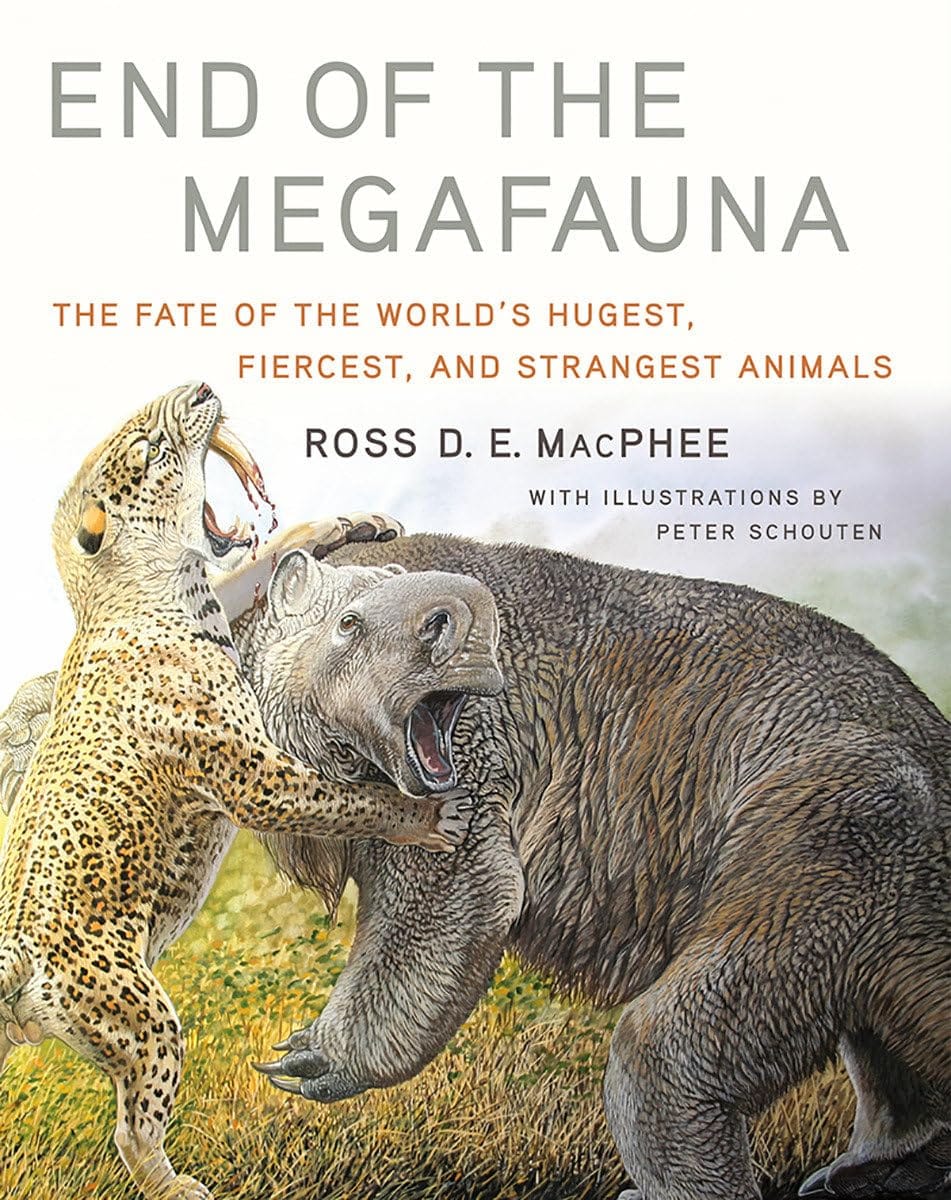
Until a few thousand years ago, creatures that could have been from a sci-fi thriller―including gorilla-sized lemurs, 500-pound birds, and crocodiles that weighed a ton or more―roamed the earth. These great beasts, or “megafauna,” lived on every habitable continent and on many islands. With a handful of exceptions, all are now gone.
What caused the disappearance of these prehistoric behemoths? No one event can be pinpointed as a specific cause, but several factors may have played a role. Paleomammalogist Ross D. E. MacPhee explores them all, examining the leading extinction theories, weighing the evidence, and presenting his own conclusions. He shows how theories of human overhunting and catastrophic climate change fail to account for critical features of these extinctions, and how new thinking is needed to elucidate these mysterious losses.
Along the way, we learn how time is determined in earth history; how DNA is used to explain the genomics and phylogenetic history of megafauna―and how synthetic biology and genetic engineering may be able to reintroduce these giants of the past. Until then, gorgeous four-color illustrations by Peter Schouten re-create these megabeasts here in vivid detail.
Barnes & Noble | Bad River Website | Local Library | Find an Indie Bookstore
Seamus Recommends:
Tales of the Urban Wild: A Puma's Journey written by Tiffany Yap and illustrated by Meital Smith
This was another LA purchase for the creature kids, inspired in part by their curiosity about Griffith Park's dear, departed celebrity mountain lion P-22. Yap, a conservation scientist, collaborates with Smith to tell the story of a fictional mountain lion, C-8, whose search for food and territory on the fringes of a city illuminates a bigger, factual story about the lived realities of urban wildlife. It's occasionally a sad read, but it's an exhilarating resource too, chockablock with beautifully-illustrated information about the territorial nature of male mountain lions, the work of urban conservationists, the impact of climate change on California ecosystems, and ideas for more animal-friendly urban design.
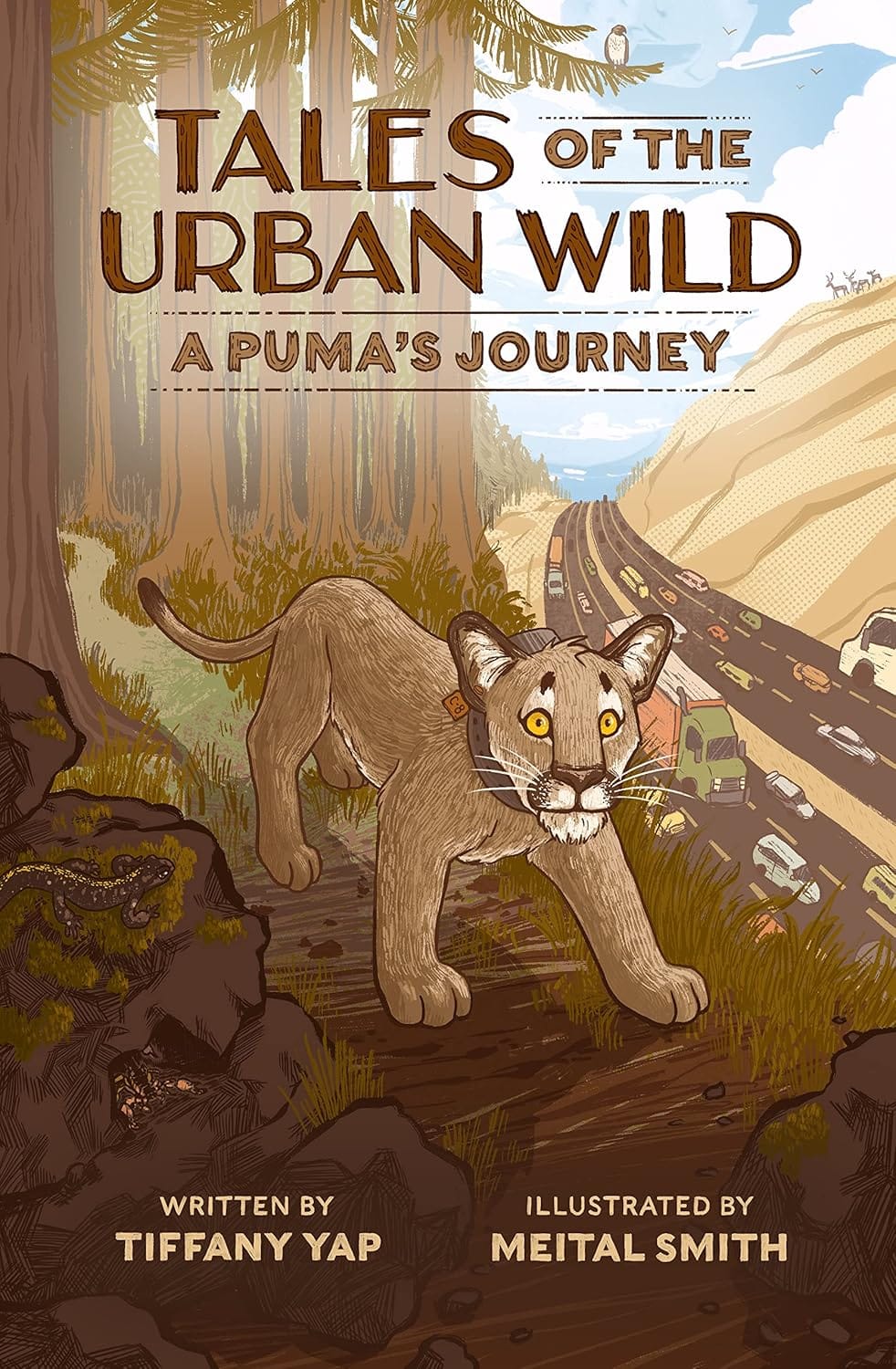
For two young mountain lions born in central California, where cityscape meets wilderness, life isn't easy. Soon after their mother leaves them to fend for themselves, a dominant male puma attacks, sending them running. The brother who dashes across a treacherous highway is hit by a truck and killed. The brother who hides up a tree survives. And so the journey begins.
Tales of the Urban Wild: A Puma's Journey follows the lone brother, who local scientists tag as C-8, as he navigates what humans have done to the landscape.
Drawing from meticulous research, conservation scientist Tiffany Yap weaves together many diverse animal and human stories, celebrating the beauty and wonder of ecology, interconnectivity, and representation. With artist Meital Smith's spectacular illustrations in the rich gold and earth tones of central California, this debut graphic novel inspires and teaches us what it means to share and protect this earth together.
Barnes & Noble | Bad River Website | Local Library | Find an Indie Bookstore
Daedalus is Dead by Seamus Sullivan
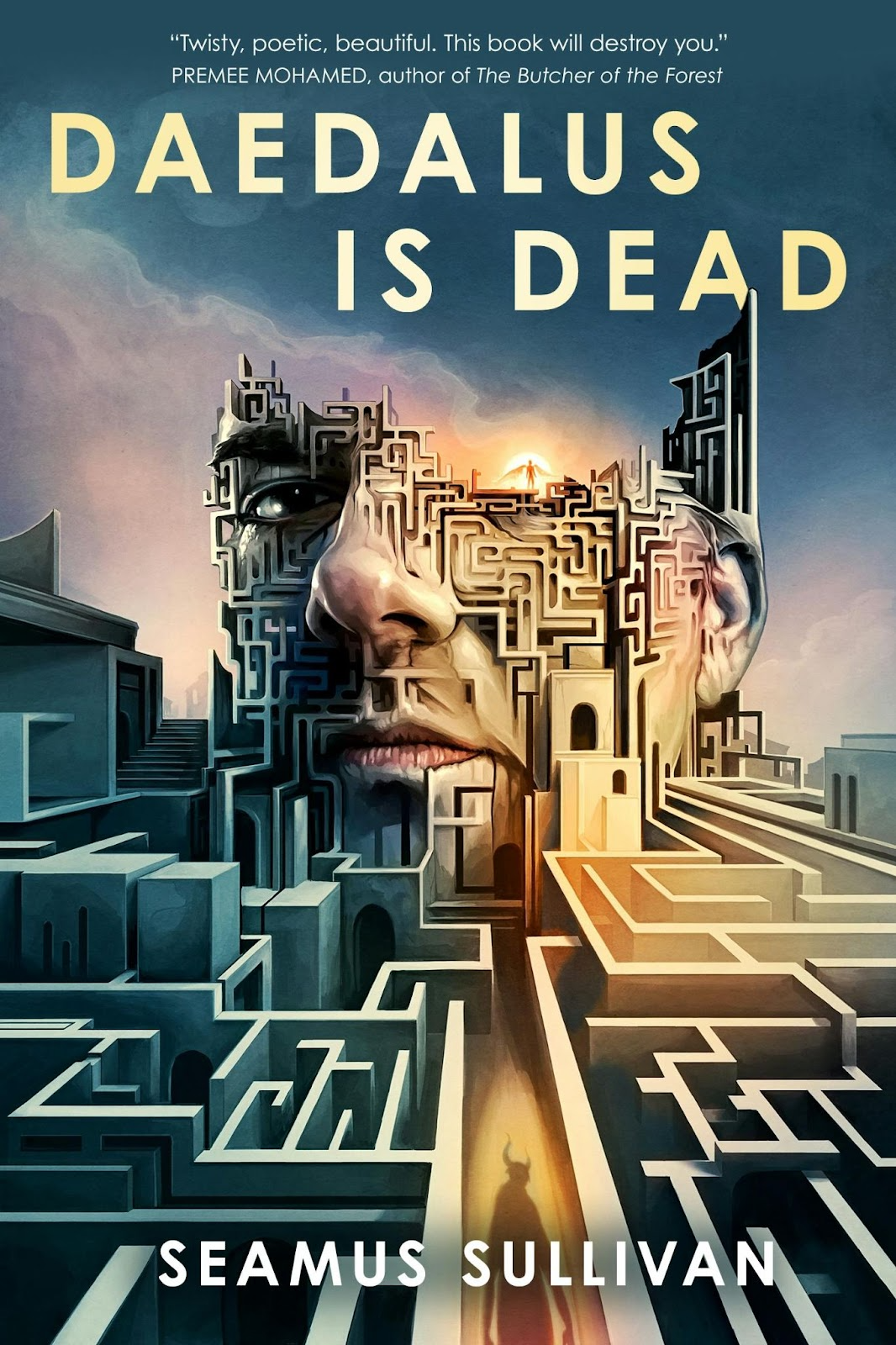
Daedalus of Crete is many things: The greatest architect in the world. The constructor of the Labyrinth that imprisoned the Minotaur. And the grieving father of Icarus, who plunged into the sea as father and son flew from the grasp of the tyrannical King Minos.
Now, Daedalus seeks to reunite with Icarus in the Underworld, even as he revisits his own memories of Crete, hoping to understand what went so terribly wrong at the end of his son's life. Daedalus will confront any terror to see Icarus again—whether it's the cruel punishments of Tartarus, the cunning Queen Persephone, or the insatiable ghost of the Minotaur.
But the truth, stalking Daedalus in the labyrinth of his own heart, might be too monstrous for him to bear.
Barnes & Noble | Bad River Website | Local Library | Find an Indie Bookstore
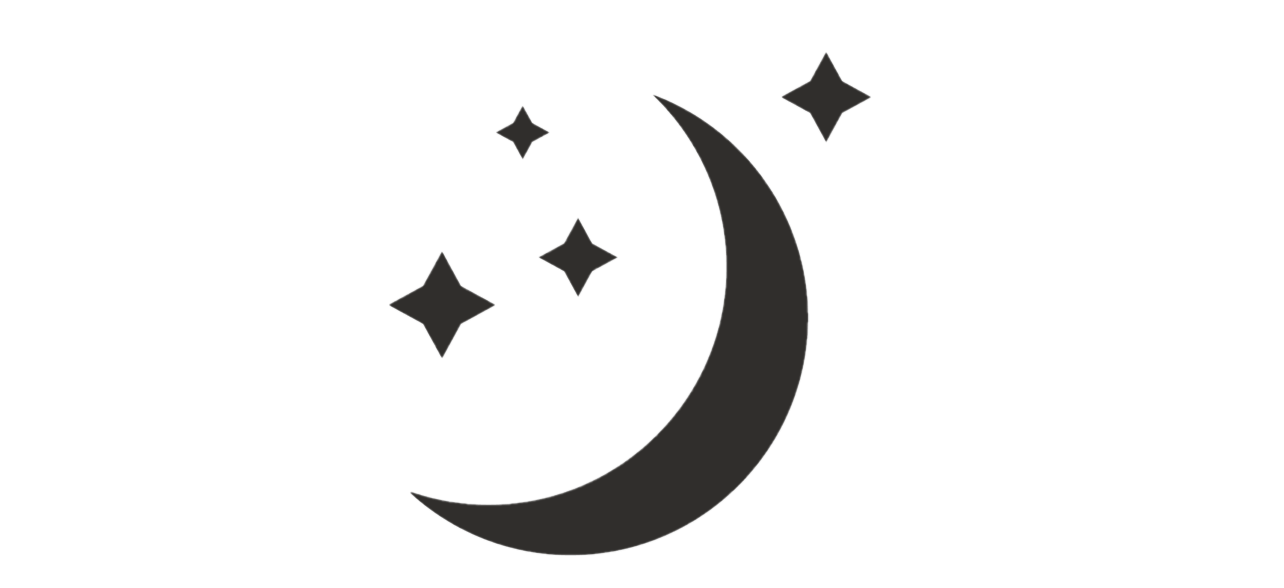


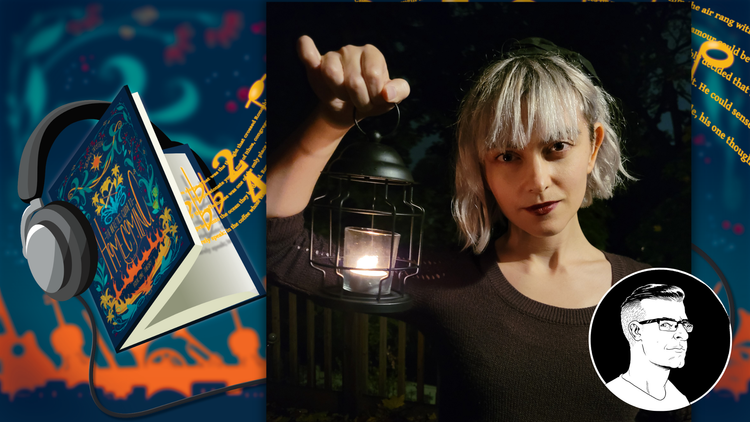

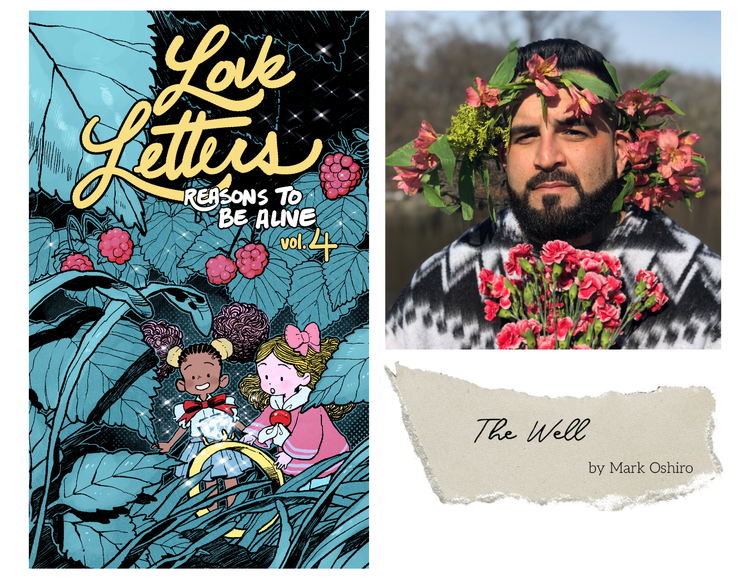
Member discussion